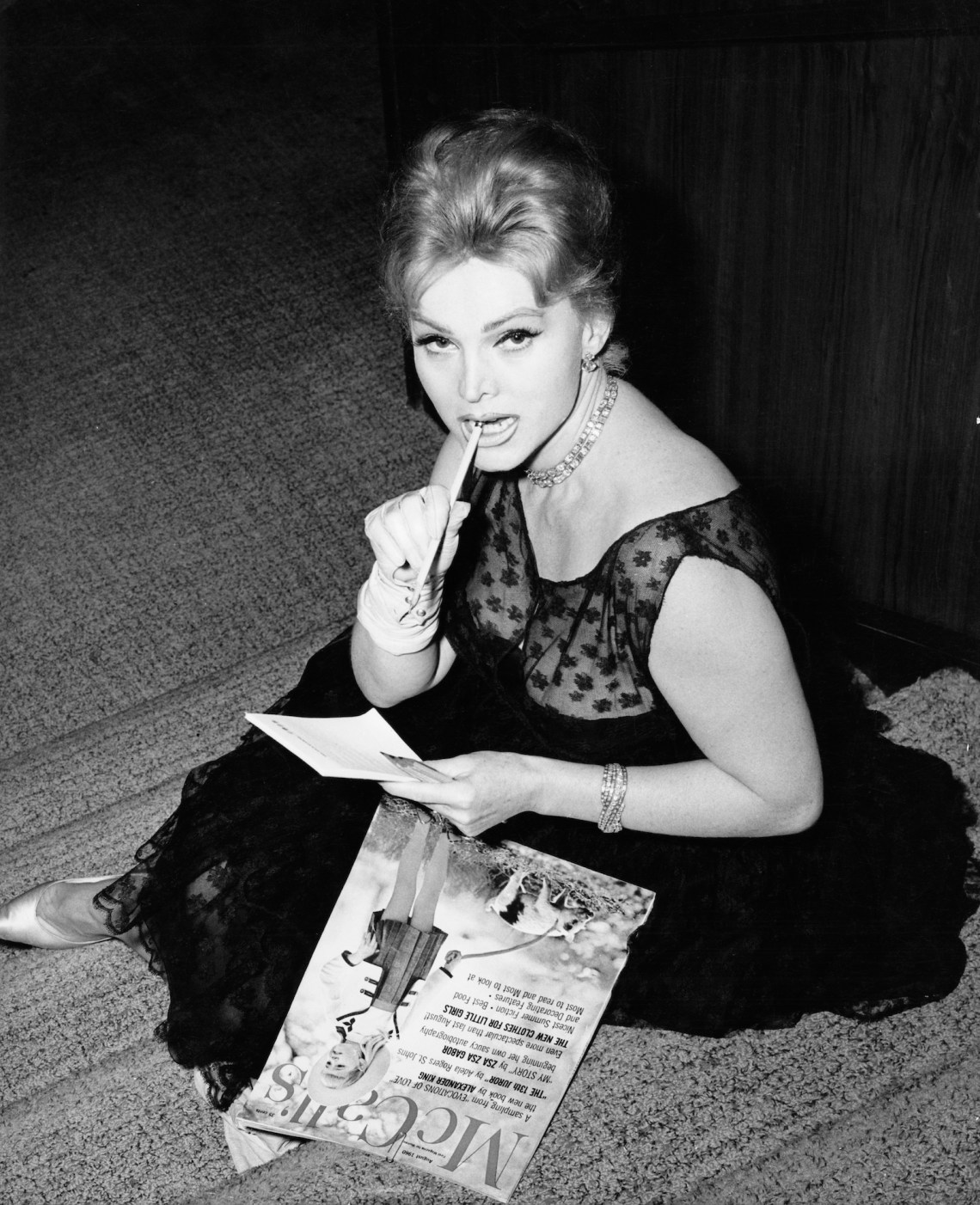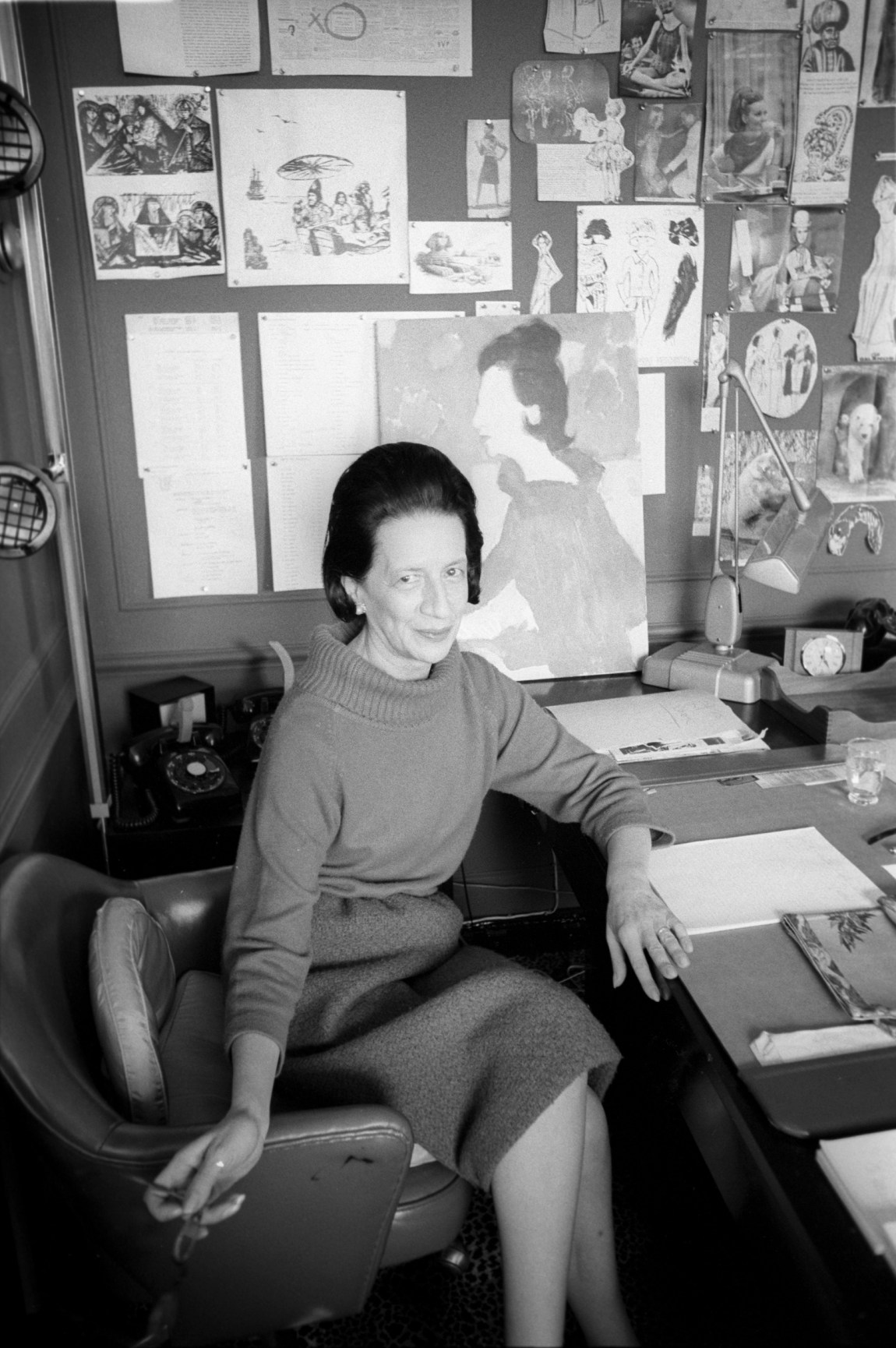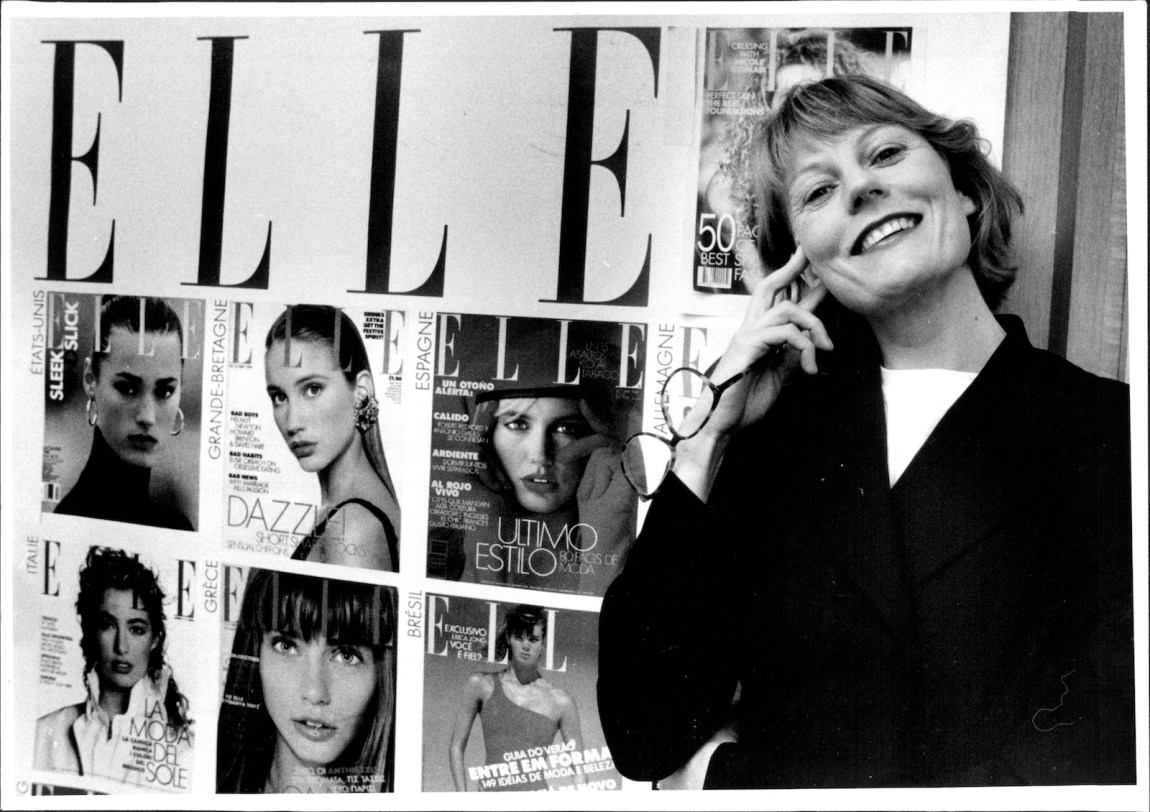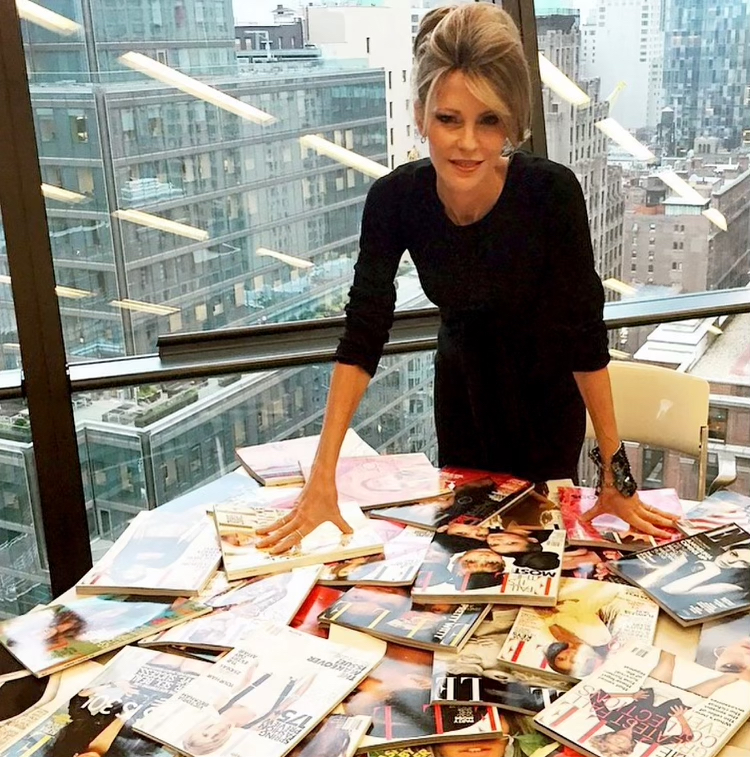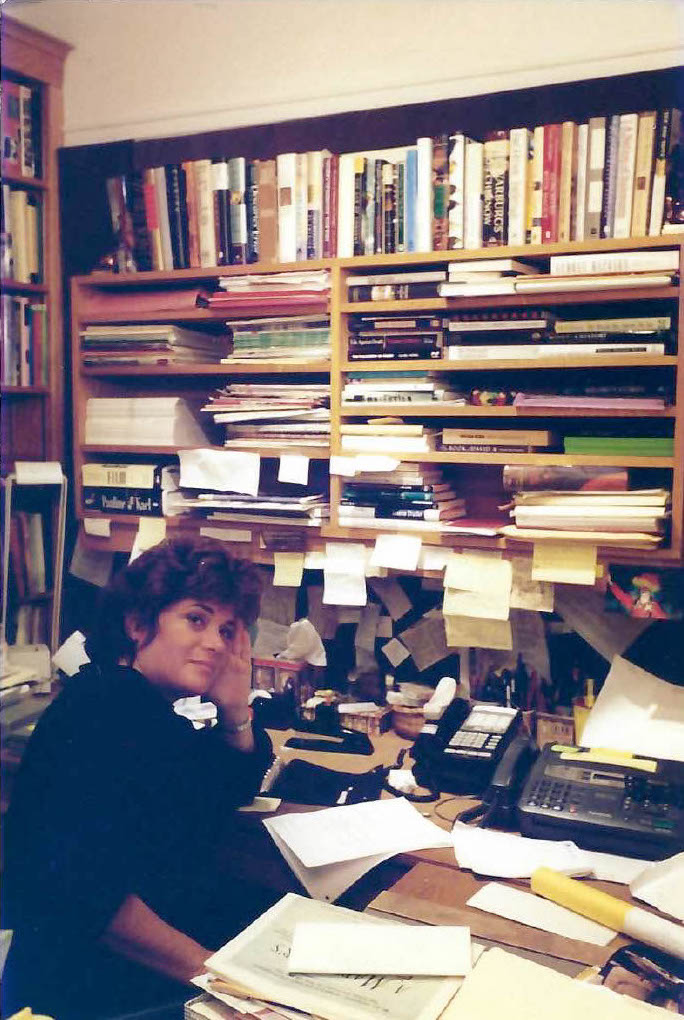As a very young writer I fashioned myself a nascent intellectual, someone who read Walter Benjamin and Roland Barthes and kept a notebook of pertinent quotes to be lingered over or tossed into a piece of my own writing when the spirit moved me. I was not, mind you, averse to reading Seventeen or Glamour; I was a sucker for Bonne Bell astringent and Revlon Blush-on, both of which advertised in their pages, and I still remember all these years later the name of Seventeen’s reigning, dewy-skinned model, Colleen Corby. But I wouldn’t have dreamed of actually turning my writing talents to these magazines—in part out of literary snobbism, and in part because I felt like an outsider in the cheerleader world they represented, where jock boyfriends were all-important and girls were eternally straightening their hair on rollers the size of soup cans.
At home we got none of the how-to-make-chicken-fifteen-new-ways magazines like McCall’s, Redbook, or Ladies’ Home Journal. My mother didn’t cook and had absolutely no interest in the “busy hands at home” activities promoted in their pages. Instead she subscribed to Vogue, Harper’s Bazaar, and Town & Country. I would leaf through Vogue to see if yellow eye shadow, the color of the month, suited the leonine model Veruschka, and through Town & Country to find out where the crème de la crème were skiing. Harper’s Bazaar was my bible for stratospherically priced beauty products I would never buy but noted down all the same, eye creams and moisturizers made of esoteric ingredients that promised to impart a youthful glow, despite the fact that I was still in my teens.
But I also saw these magazines as glamorous arenas in which to publish essays. Joan Didion, Penelope Mortimer, Alice Munro, and even the quirky Jane Bowles had their early work published in Vogue, and Mademoiselle was known for publishing writers who went on to make a name for themselves, like Truman Capote and Carson McCullers. So I was thrilled when, in my early twenties, a short story of mine was published in Mademoiselle, a melancholy musing about spending a listless summer afternoon at the family beach house trading deadpan non sequiturs with my younger brother. Yet for all its cachet, the publication of The Bell Jar had turned the magazine into an emblem of everything that was wrong with women’s magazines, even aspirational ones. Sylvia Plath had been a guest editor at Mademoiselle in the summer of 1953 and described how repelled she had been by the phoniness and rabid marketing behind the magazine’s elevated façade.
Along with the mandatory Jewish publications like Commentary and Midstream, my family also got The New Yorker and The New Republic. (The Nation was deemed too anti-Israel for our Orthodox Jewish household.) My father, revealing unexpectedly catholic taste, subscribed to the left-leaning New Statesman, whose succinct book reviews I loved, as well as the right-leaning Encounter, at one point funded by the CIA. When I was twenty-five, Encounter published a short story called “Sailing” in which I confused the hull and bow of a boat. But the world that really held my interest were the smoke-filled Manhattan living rooms in which eggheads argued about anti-anti-Communism and whether Alger Hiss was innocent—symbolized by journals like Dissent, The Nation, and Partisan Review. At its height Partisan Review featured writers like Lionel Trilling, Mary McCarthy, Philip Roth, and Susan Sontag, and even during its gradual downward spiral it continued to carry the flag for what Diana Trilling once called “the life of significant contention.”
By the time I was twenty-three I had worked a minute for Bob Silvers at The New York Review, where I culled piles of galleys and books to be sent to reviewers, put in calls to Sir Noel Annan, and bought grapes for the abstemious Silvers to snack on. After that I spent a year in the famed typing pool at The New Yorker, where you had to click away at a certain speed (ninety words a minute) and cartoonists and writers came looking for willing female prey. (I managed to remain chaste.) I went on to attend graduate school at Columbia while writing book reviews for Commentary, The New York Times Book Review, and The New Republic, where one prompted a fan letter from Woody Allen and another an invitation to write for Paul Newman’s production partner. I had also begun writing a bimonthly book column for a long-running, well-respected journal with a minuscule readership called The New Leader.
After a dinner at Diana Trilling’s house on Martha’s Vineyard in the mid-1970s I landed on Partisan Review’s editorial board. At our meetings the curmudgeonly William Phillips, one of the two founding editors (the other was Philip Rahv), would offer impatient comments as we (the board included Steven Marcus and Morris Dickstein) argued about which books were worth reviewing and which critics were good enough to be assigned, say, a new biography of Neville Chamberlain. I was one of only two or three women, depending on who showed up, and felt slightly patronized by the men, as in: “What does the little lady have to say?” But I also found it sharpened my wits and strengthened my confidence to argue issues with people who thought for a living.
Advertisement
*
And then, somehow, after all these sojourns in highbrow territory, I found myself at something of a professional loss. I had dropped out of Columbia, mainly because I was afraid I’d end up immured in the stacks, glassy-eyed from reading Derrida and Barthes (this was the heyday of French deconstruction) without any notion of how to implement my erudition outside the academy. Although I enjoyed writing reviews, I didn’t think of them as adding up to a “real” job, much less a real income. So thanks to the intervention of an older friend, I landed in thoroughly alien country: McCall’s. The magazine, which once published an advice column by Eleanor Roosevelt, had expanded to include stories about extramarital affairs and sexual anxieties.
As a staff writer I was given a tiny, windowless office and a very efficient part-time assistant with impeccable handwriting. My job was to write “service copy”—short pieces of text to accompany layouts on food, fashion, and beauty. The aim was to make familiar items like meatloaf or mascara sound as though they had been rediscovered. “Ground beef again?” I wrote. “That old stand-by of the dinner table is given a lift with recipes from our kitchen.” And: “Eyes are the windows of the soul, it’s been said, but lashes are the frames.”
The part of my job I loved most was going into the kitchen with a group of senior editors, including Martha, the fashion editor, Maureen, the titian-haired Scottish beauty editor, and the editor-in-chief, Bob Stein, to whom I attributed a unique insight into the female psyche. There we all stood around and admired the bounteous, photogenic array of food that had been cooked and baked in the McCall’s test kitchens for that month’s shoot. As I took notes I felt my mouth start to water and was hard put not to take a bite out of the gleaming, probably inedible roast turkey or the optimally browned chocolate chip cookies. I was never able to determine whether the staff ate the food after I left or whether the whole thing was just for show, like an exhibit at the World’s Fair.
The atmosphere at McCall’s was fairly girly; I recall that the walls were painted in a flattering shade of apricot. There wasn’t much discussion of world events except in passing, and personal revelations were more wholesome than titillating. I knew that Martha was divorced and that Maureen was unmarried. But I would never have admitted to either one that I was seeing a therapist, although I can’t imagine I was the only staffer who did. (At The New Yorker at that time being in analysis was practically part of the job description and almost completely covered by the magazine’s extravagant insurance.) I learned soon enough to leave my more neurotic side—or perhaps my more literary one—at home. I sometimes chatted with the books editor, who had similar tastes to mine but was confined by the magazine’s mandate to excerpting middlebrow fiction with well-written but conventional plots and harmonious resolutions.
At some point in my tenure I started writing features on what I thought of as lighter subjects: obsessive love (for which I drew heavily on my own experience); what your voice said about you (for which I interviewed an expert on charisma); the meaning of Chanukah (the magazine’s token ethnic piece of the year, which I thought might have been inspired by my presence). I tried to infuse these pieces with more nuance and reflection than the average McCall’s article, but invariably my drafts came back with comments in bold Sharpie: Simplify. Don’t deviate from the main storyline. Too many personal asides. Perhaps the most important lesson I took away from my time at McCall’s was one I intended to sidestep: an emphasis on “closure,” on bringing a piece of writing around to where it started and wrapping it up in a bow. No irresolute endings; no leaving the reader with a sense that our dreams rarely come to fruition and that sadness is an unavoidable aspect of life. As a believer in ambiguity and the ubiquity of disappointment, I have shied away from both ideas ever after.
Advertisement
Still, I can’t say it was all a bust. I learned to write more accessibly for a wider audience. I also learned to weave the narrative threads of an essay together more tightly instead of knotting them up with digressions and circumlocutions. My writing gained a crisper edge and a greater directness, even if it was losing a certain “literariness.”
*
I was in my late thirties before I returned to the world of women’s magazines again. By then I had published a novel and worked as an editor in book publishing for six years. I had come to realize that Mirabella, Elle, and Allure were not as limited in their vision as I had imagined them to be and were not to be so lightly dismissed as second-class citizens in the Grand Republic of Letters. There was interesting journalism coming out of these publications, including hardcore reporting, vivid profiles, and introspective personal essays. I decided to stop being such an elitist and signed on. After all, I had subjects I wanted to explore beyond Rimbaud and Naipaul—for example, the current (and ongoing) fashion of burdening one’s very young child with a calendar full of playdates.
I also wrote one of my first intimate up-close pieces (often pejoratively called “confessional,” a word applied to women’s candor more than men’s) for Bazaar, called “In the Country of Divorce.” I wrote it in situ, stuck in the middle of my own clamorous separation from the father of my three-year-old daughter, who had sued for sole custody. I went through it all: the besetting anxieties (“Will there ever be a second husband?”) and troubling realizations (“I married a man who left me feeling lonely not because he wasn’t home but because he was”); my doubts about my feisty feminist lawyer (“I wanted to make sure she understood that I was not getting my divorce on behalf of the women’s movement”); the pervasive sense of guilt (“to this day I find it unbearably sad to discuss with my daughter why her parents no longer live together”) and shame (“perhaps I didn’t know how to love”). I didn’t really care much about other people’s opinions except for those of one or two close friends, who in the main admired my fearlessness in exposing my feelings, although I will never forget something an agent told me years later: “When they call you brave, they really mean you’re crazy.”
Writing the piece wasn’t cathartic; I don’t believe writing is, if only because it requires too much effort and artfulness to provide any kind of easy release. But it did enable me to see that there was a place to write about the subjects that had always interested me: the things that weren’t spoken about out loud but were discussed in hushed tones among women when they weren’t being observed, including topics usually considered too soft or insignificant to be taken seriously. Finally, I could expatiate about my longstanding fascination with cosmetics and their elaborate packaging for Allure and muse on the fetishization of thinness for Mirabella. The latter I researched by going to a diet doctor with a four-and-a-half-year waiting list and a consultation fee of $475 (in 1993!). He would radically limit your food choices—he was a devotee of the chemical-ridden Tasti D-Lite soft serve—and made individualized tapes in which he would cajole, exhort, and threaten you not to give in to your native gluttony. “Daphne,” his smooth voice intoned, “you don’t want to eat Italian, you want to wear Italian.’”
I professed my love of suntanning, despite its carcinogenic dangers. “How can anything,” I asked, “that alleviated John Updike’s psoriasis and is being studied by scientists for its beneficial effect on depression be all bad?” Once my newfound affinity for women’s magazines was established, there was no stopping me. Not that I didn’t continue to breathe more rarified air; I wrote about Freud for The New Yorker, where I had become a staff writer even as I continued to write for other magazines.
I stayed at Elle for a number of years as a contributing writer, and there was little I couldn’t write about, encouraged by thoughtful and articulate editors who helped me see when I failed to drive home a point or make my case convincingly enough. (Once in a while, but very rarely, I would have an argument with my editor about a particular adjective or reference I had used that was deemed too esoteric for the Elle reader.) I dipped further into profile writing, beginning with Madonna and going on to write about Hugh Hefner, Kim Kardashian, and the singer Martha Wainwright. I prided myself on asking difficult questions and making nuanced observations in these profiles instead of whipping up the usual celebrity fluff. I aired my abiding affection for Madame Bovary on the occasion of a new translation, and in another essay I came to the defense of single or no longer married women as the true romantics—women who were disinclined to suffer through what Stella Gibbons called “the long monotony of marriage”—as a means of examining my own ambivalence about not being part of a couple.
I also began writing extensively about fashion, profiling Karl Lagerfeld (who struck me as quietly anti-Semitic), Dries van Noten, Stella McCartney, Jason Wu, and Donatella Versace. I watched Donna Karan, who seemed so freewheeling about designing clothes, holding up fabric against her own body and shaping it, and I wondered whether the artistry was hidden or nonexistent. I discovered in the process that the details of clothing design hooked me every bit as much as the details of an Elizabeth Bowen novel, and came to share the sentiment Virginia Woolf recorded in her diary: “My love of clothes interests me profoundly.” I also wrote for Vogue about getting braces a second time as an adult, and a piece about Brooke Astor’s death and the discomfiting way elderly women with money were treated.
And how is it possible that I have forgotten to mention money—“filthy lucre,” as Freud called it? Women’s magazines, unlike most of the literary magazines I wrote for (with the exception of The New Yorker), actually paid well—anywhere from $2 to $4 a word. Which in turn gave me the sense that my words were valued not just in an abstract, cocktail-party sort of way—“Oh, how interesting, you’re a writer”—but had real, concrete worth. At one point I wrote a two thousand-word bimonthly books column for Elle, which at the rate of $4 per word netted me $8000 every other month. It seems implausible now, like the size of Elizabeth Taylor’s diamonds.
*
As the years went by and the magazine grew fatter and glossier, there was only one little problem: the typeface on my essays became smaller and smaller and increasingly hard to find between the Jimmy Choo ads. When I would ask a good friend who had been a New Yorker editor for decades and then the editor of the Times Book Review to read a piece I was particularly pleased with, he would come back to me and say that he had looked through the magazine and couldn’t find it. “Too many ads,” he declared. On the one occasion he took the time to actually read through the whole magazine he was impressed and wondered why he hadn’t known how good the writing was before.
Of course it’s not just ads that have changed magazines forever. The larger problem for women’s magazines, and magazines in general, is that money has moved from print to online in a way that has changed reading habits dramatically. For one thing, the households like mine that subscribed to half a dozen print magazines no longer exist. For another, clickbait proliferates, burying sterling content under reams of advertising. There is the occasional exception, such as Teen Vogue’s evolution into a source of surprisingly serious political coverage, but if you go to the websites of Vogue and Elle you will find a dizzying array of celebrity photos and lists of the “Five Best Toners” or “Ten Reasons Not To Criticize Your Boyfriend” rather than the content that still lingers in the print versions.
The days of sneaking in serious writing, whether of the reportorial or inward-looking variety, under the guise of selling perfume are gone. There are a few holdovers, but in women’s magazines there is less and less room given to “text” and more and more room given to ads and products. As a result there are fewer pieces of writing that capture unvoiced thoughts or reflect textured sensibilities. Fashion and other fields long associated with women are now being discussed and promoted on TikTok and Instagram and women have once again found themselves beholden to age-defying retinol creams. There isn’t much room or value attributed to the examination of the interior life on the glossy page, thanks in part to the exhibitionistic presentation of self demanded by social media.
Perhaps what I miss most about the women’s magazines as they once were is the culture they represented—a slower-moving, less frenzied moment when algorithms didn’t yet shape the way we imbibed information and formed opinions. It’s not that the autobiographical reflection that used to be featured in some of these magazines has disappeared from the literary map; it survives in the spread of personal essays via the Internet and in the proliferation of memoirs and autofiction. It may be more that I am nostalgic for the object itself, the way one could slowly turn the pages and come upon something surprising and absorbing, and for a lapsed time when I would get into bed or lie on a beach chair with the latest issue of Elle or Vogue and briefly get lost in rumination on a love affair that didn’t work out. I’ve never actually bought a pair of Jimmy Choos—they cost too much—but one of these days maybe I’ll treat myself to a pair of camel kitten heels I’ve been eyeing, in memory of things past.


